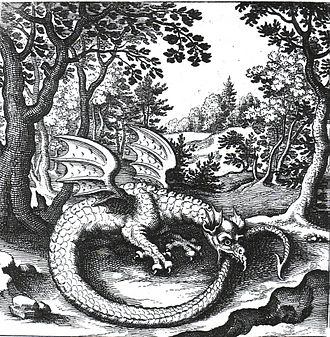Autocannibalism
The act of eating one's own body parts
Autocannibalism, also known as self-cannibalism, is the act of eating parts of one's own body. It is a rare form of cannibalism and can occur in various contexts, ranging from cultural practices to psychological disorders.
Forms of Autocannibalism[edit]
Autocannibalism can manifest in several ways, including:
Compulsive Autocannibalism[edit]
Compulsive autocannibalism is often associated with psychological disorders such as obsessive-compulsive disorder (OCD) or body dysmorphic disorder (BDD). Individuals may engage in behaviors such as biting their nails, chewing on their skin, or eating scabs. In extreme cases, this can lead to significant self-harm and requires medical intervention.
Cultural Practices[edit]
In some cultures, autocannibalism has been practiced as part of ritualistic or spiritual ceremonies. For example, certain indigenous tribes have been known to consume small parts of their own bodies, such as hair or nails, as a means of connecting with their ancestors or the spiritual world.
Survival Situations[edit]
In extreme survival situations, individuals may resort to autocannibalism to sustain themselves. This is typically a last resort when no other food sources are available. Such cases are rare and often involve the consumption of non-essential body parts, such as skin or blood.
Psychological and Medical Implications[edit]

Autocannibalism can have severe psychological and medical implications. From a psychological perspective, it may indicate underlying mental health issues that require treatment. Medically, it can lead to infections, tissue damage, and other complications depending on the extent of the behavior.
Treatment[edit]
Treatment for autocannibalism often involves addressing the underlying psychological issues. This may include therapy, medication, or a combination of both. Cognitive-behavioral therapy (CBT) is commonly used to help individuals manage compulsive behaviors and develop healthier coping mechanisms.
Historical and Mythological References[edit]

Throughout history, there have been various references to autocannibalism in mythology and folklore. The Ouroboros, an ancient symbol depicting a serpent eating its own tail, represents the concept of self-consumption and the cyclical nature of life and death.
In historical accounts, figures such as Elizabeth Báthory have been associated with acts of self-consumption, although these stories are often exaggerated or mythologized.
Related pages[edit]
Ad. Transform your life with W8MD's Budget GLP-1 injections from $75


W8MD offers a medical weight loss program to lose weight in Philadelphia. Our physician-supervised medical weight loss provides:
- Weight loss injections in NYC (generic and brand names):
- Zepbound / Mounjaro, Wegovy / Ozempic, Saxenda
- Most insurances accepted or discounted self-pay rates. We will obtain insurance prior authorizations if needed.
- Generic GLP1 weight loss injections from $75 for the starting dose.
- Also offer prescription weight loss medications including Phentermine, Qsymia, Diethylpropion, Contrave etc.
NYC weight loss doctor appointmentsNYC weight loss doctor appointments
Start your NYC weight loss journey today at our NYC medical weight loss and Philadelphia medical weight loss clinics.
- Call 718-946-5500 to lose weight in NYC or for medical weight loss in Philadelphia 215-676-2334.
- Tags:NYC medical weight loss, Philadelphia lose weight Zepbound NYC, Budget GLP1 weight loss injections, Wegovy Philadelphia, Wegovy NYC, Philadelphia medical weight loss, Brookly weight loss and Wegovy NYC
|
WikiMD's Wellness Encyclopedia |
| Let Food Be Thy Medicine Medicine Thy Food - Hippocrates |
Medical Disclaimer: WikiMD is not a substitute for professional medical advice. The information on WikiMD is provided as an information resource only, may be incorrect, outdated or misleading, and is not to be used or relied on for any diagnostic or treatment purposes. Please consult your health care provider before making any healthcare decisions or for guidance about a specific medical condition. WikiMD expressly disclaims responsibility, and shall have no liability, for any damages, loss, injury, or liability whatsoever suffered as a result of your reliance on the information contained in this site. By visiting this site you agree to the foregoing terms and conditions, which may from time to time be changed or supplemented by WikiMD. If you do not agree to the foregoing terms and conditions, you should not enter or use this site. See full disclaimer.
Credits:Most images are courtesy of Wikimedia commons, and templates, categories Wikipedia, licensed under CC BY SA or similar.
Translate this page: - East Asian
中文,
日本,
한국어,
South Asian
हिन्दी,
தமிழ்,
తెలుగు,
Urdu,
ಕನ್ನಡ,
Southeast Asian
Indonesian,
Vietnamese,
Thai,
မြန်မာဘာသာ,
বাংলা
European
español,
Deutsch,
français,
Greek,
português do Brasil,
polski,
română,
русский,
Nederlands,
norsk,
svenska,
suomi,
Italian
Middle Eastern & African
عربى,
Turkish,
Persian,
Hebrew,
Afrikaans,
isiZulu,
Kiswahili,
Other
Bulgarian,
Hungarian,
Czech,
Swedish,
മലയാളം,
मराठी,
ਪੰਜਾਬੀ,
ગુજરાતી,
Portuguese,
Ukrainian